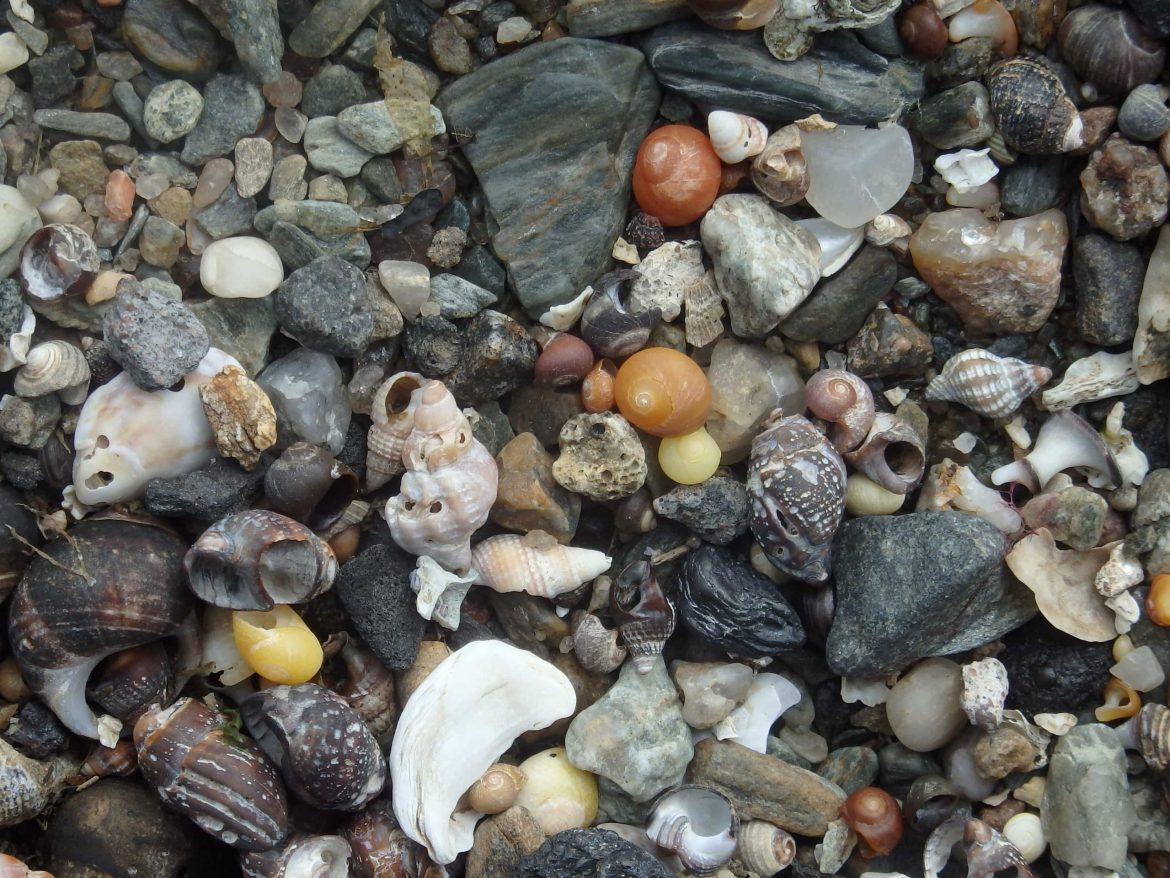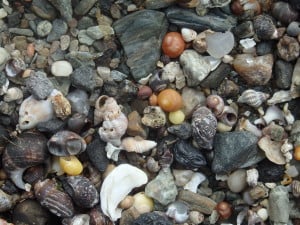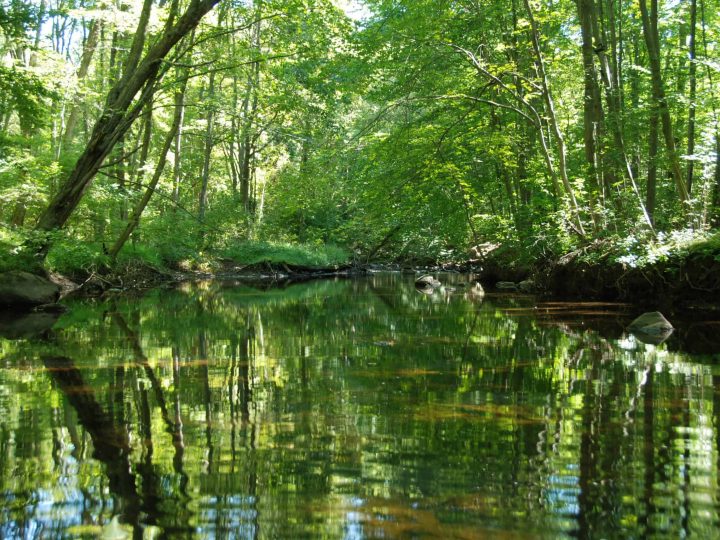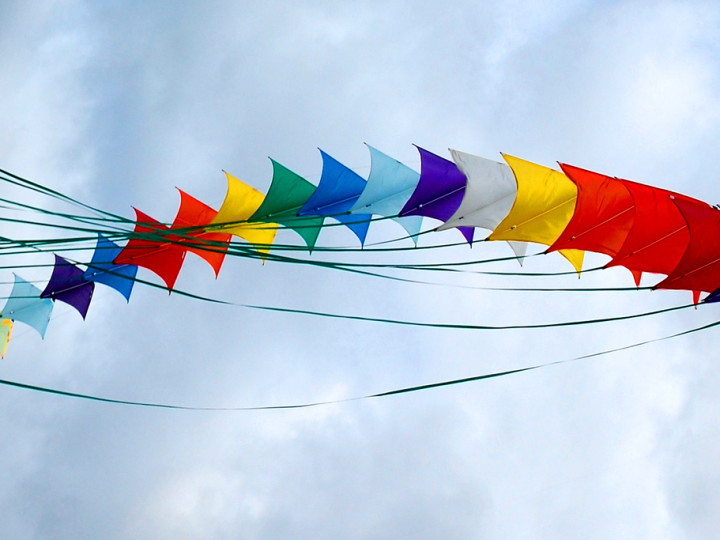
Live mud dogs are everywhere…on the sand flats and the mud flats. They are tiny little black vegetarian gastropods also known by their Latin International name (ital)nassarius obsoletus. Very seldom will you see a live lighter-colored, much higher spired (ital)nassarius trivatatus. At the Milford Marine Institute Marine Biology Camp we call these beautiful beaded gastropods “Nassa”. Why don’t we ever see a live one working the sand and mudflats the way the mud dogs do? Because these guys are subtidal rather than intertidal. They work the benthos—or the bottom—of Long Island Sound.
What’s the prettiest mollusk on the sand flats you ask? That would be (ital)Pandora gouldiana. This is the bivalve with the mother of pearl shimmer to it. It’s also the one with the spout-like shape to it. Why do we seldom see the live animal? Once again, this creature too is subtidal and not intertidal.
The most exciting gastropod to search for would be the smooth periwinkle. You might be wondering why this animal is so exciting to find and the answer is that it comes in several colors, just like the ubiquitous jingle shell (anomia simplex). The smooth periwinkle can be found in various shades of browns and reds, but the most important shade is yellow. That’s precisely why we tell the kids at the Milford Marine Institute Marine Biology Camp to “find the gold nuggets.”
The campers do find them, but only after searching very carefully and with great attention to detail. Like so many of our marine species there are certain beaches where the populations are larger than others. We have very good luck finding the smooth periwinkle in Woodmont, while the Bayview area is good for (ital) Pandora gouldiana. The common jingles come in bright yellows, oranges, and even silver and black.
Are there some animals that seem to be in less abundance today than years before? As a kid summering in Woodmont in the 1950’s, I could turn over almost any rock and find an eel. Today you will not find them. Instead you’ll find the Asian invasive crab that seems to enjoy eating the larvae of many of our native species such as the eel. It’s just a theory, but I’m sure that crab hitched a ride in the hold of some Japanese tanker and when the bilge was cleaned in New Haven, fell out and said, “Hallelujah…free at last!” It then began walking the Long Island Sound benthos until it made its way to Milford. It also seems to enjoy eating the larvae of the common periwinkle and blue mussel since these species appear to be declining along the rocky coastal habitat areas such as Woodmont.
Last summer I could not find many of the most common but highly defensive lady or calico crabs (ital)(ovalipes ocellatus). These are the pink to purple ones with the beautiful patterned carapace. (They are also the ones that give quite a nip when a human foot comes too close.) Could these calicos also be a victim of the now ubiquitous invasive crustacean with its black banded legs? I did find numerous young moon snails, however, and it is always interesting to place one on your hand to see the large foot emerge and try and walk to freedom.
And of course there are angle wings on our sand flats. These false angel wings (ital)(Petricola pholadiformis) look like what we picture an angel’s wings to resemble. In truth, they are very brittle and so this pelecypod (which are no more than 2-inches in length) is hard to locate in perfect condition. The harder and larger (up to 7-inches) true angel wing (Ital)(Cyrtopleura costata) tends to be found in deeper waters than our false angel wings.
So, whether you are searching the various sand or mud flats, the life there is constantly changing. But it’s always fun to discover which animals are strong enough to survive the inevitable changes to our marine ecosystems.
(ital)—Tim Chaucer





